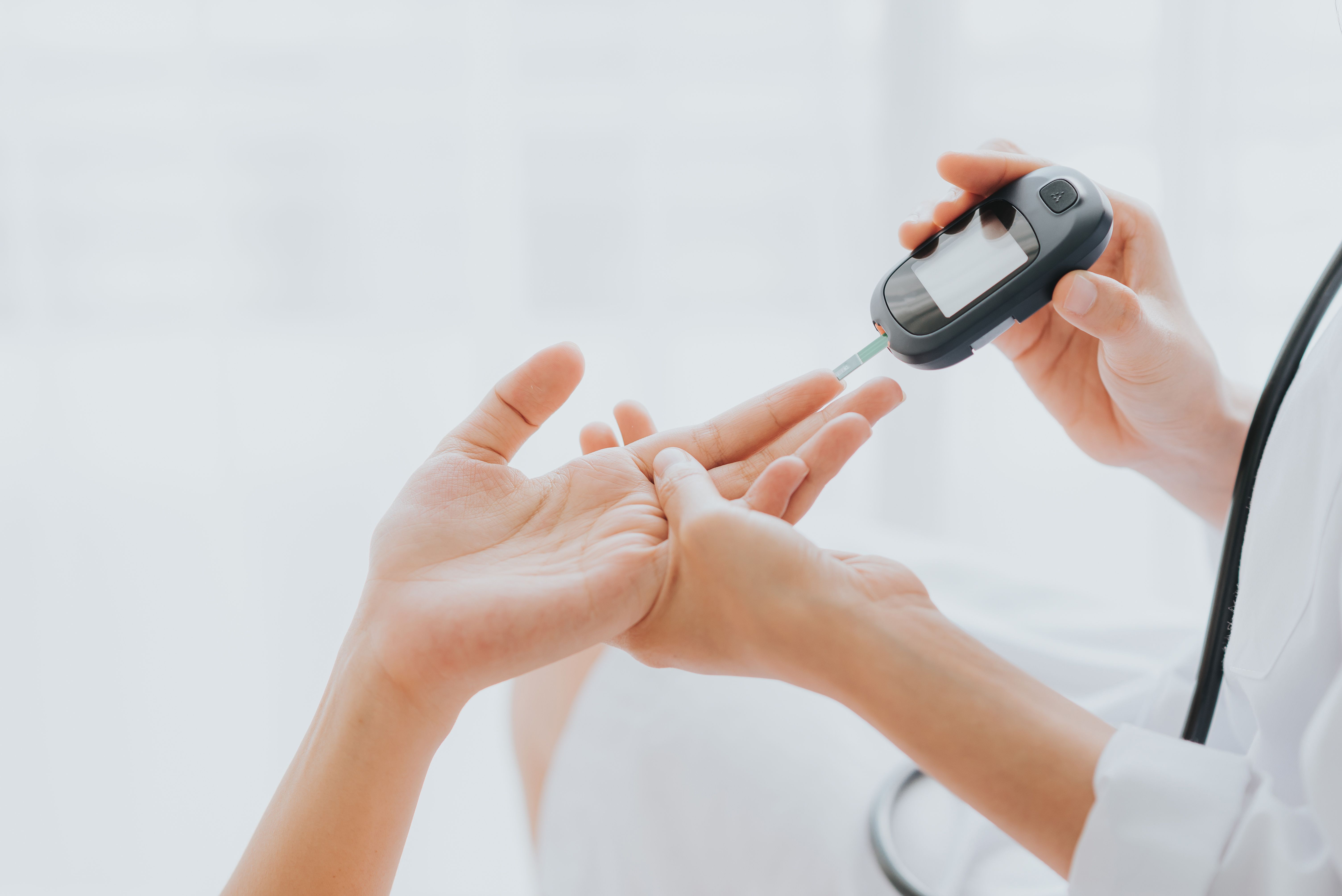About the Author
Jeannette Y. Wick, MBA, RPh, FASCP, is the director of the Office of Pharmacy Professional Development at the University of Connecticut School of Pharmacy in Storrs.
Publication
Article
Pharmacy Times
Author(s):
Pharmacists can walk a mile in their patients’ shoes by wearing a CGM device.
Enhancing basic care with technology-enabled devices is all the rage. Often researchers combine drugs with technology to meet patients’ previously unmet needs. In diabetes care, the idea behind continuous glucose monitoring (CGM) was to eliminate the need for finger sticks and provide real-time glucose measurements.
Image credit: interstid | stock.adobe.com

CGM devices have been available since 1999, and as with all technology, the manufacturers of these devices constantly strive to make better products. Over the years, these devices have evolved to no longer require finger-stick calibration and to link with smartphones and some smart watches. Manufacturers have also added alarms for out-of-range glucose levels; readers so patients can scan, analyze, and receive an instant indication of their blood glucose levels; and the ability to store and analyze data.
Since the introduction of these devices, many studies have shown the significant benefits of CGM. For instance, individuals with type 1 diabetes who use CGM tend to have improved time in range (time spent in the target glucose range of 70-180 mg/dL), better hemoglobin A1C levels, and fewer episodes of hypoglycemia (less time spent with glucose < 70 mg/dL).1
The CGM device doesn’t create these outcomes; rather, it gives patients real-time data and motivates immediate action. All these outcomes reduce demand for care due to complications and reduce the need for repeated primary care and specialty visits.2
Currently, CGM technology is costly. Most insurers and health care systems restrict its availability to patients who either have type 1 diabetes or significantly uncontrolled or insulin-requiring type 2 diabetes.3 However, consider this: A 2018 study enrolled 57 healthy adults who wore CGM devices for 2 weeks. Many participants experienced blood sugar elevations 15% to 20% of the time, indicating they were at increased risk of future type 2 diabetes and its complications.4 This raises a simple question: Wouldn’t earlier use of CGM in people with any type of diabetes be advantageous?
Jeannette Y. Wick, MBA, RPh, FASCP, is the director of the Office of Pharmacy Professional Development at the University of Connecticut School of Pharmacy in Storrs.
CGM for Everybody?
Increasingly, patients are securing CGM devices on their own at considerable cost, either because they do not qualify for insurance coverage or they seek improved health.4,5 The reality is that after enrolling in one of these “digital health plans,” patients will receive an FDA-cleared device, often a FreeStyle Libre or a Dexcom. A company-affiliated prescriber writes the prescription. However, the FDA has cleared a new glucose biosensor that will be available without a prescription for adults 18 years and older this summer.6
Pharmacists may have little exposure to CGM devices unless they work in clinical roles, but they can learn much from working with patients who begin using the devices, or better yet, wearing one themselves for a few months. Some patients will have questions about digital health plans too.
Lessons Learned Wearing a CGM Device
Lesson 1: Every CGM device is different, although they generally provide the same information (Box). Before selecting a CGM device, it is critical to determine whether the specific device is compatible with the patient’s cell phone or smart device. The patient’s device must have near field communication (NFC) and Bluetooth functions. Most smartphones manufactured after 2016 have embedded NFC technology and Bluetooth connectivity. Patients who lack compatible smartphones will need to order a separate monitoring device called a receiver.

Lesson 2: Some devices require scanning at least every 8 hours, and some don’t. Many clinicians complain that patients forget to scan, and more frequent scanning has been linked to improved control.7 Clinicians may not realize that occasionally patients receive a sensor—the device on the back of the arm or stomach—that seems to scan poorly. The manufacturer may replace it, but not necessarily. In other words, scanning can sometimes be frustrating.
Lesson 3: CGM devices teach users tricks to steady their blood glucose. Patients can see that eating protein or fat first can blunt carbohydrates’ effects on blood sugar, as can exercising routinely. They can also identify foods that contain hidden or unexpected sugars and make healthier choices. A CGM device also significantly reduces diabetes-related stress.5,8
Lesson 4: A nutritionist is a valuable asset.9 Nutritionists help patients learn to read labels and calculate their net carbs so they can better plan their meals. They also coach patients to observe how certain foods affect their blood sugar and use trial and error to find alternatives.9
Lesson 5: Teaming with others who use CGM devices can help patients identify good habits, learn the CGM device’s functionality and limitations, and can help pharmacists provide information about what characteristics users want in their next CGM. Working with others who use the same or a different device gives individuals a support group. Sharing information helps CGM users learn that everyone’s bodies differ in response to foods. For example, one person may be sensitive to oatmeal for breakfast while another may not. It’s the epitome of individualizing education, care, and interventions.
CONCLUSION
Pharmacists need to know considerably more about CGM as this technology prepares to make the leap to OTC status. Wearing the actual device is an education; in addition to teaching about CGM’s benefits, firsthand experience also helps pharmacists understand some challenges such as device malfunction and insertion issues.10 Ultimately, CGM devices motivate change in individuals who have diabetes as well as those who do not.

Stay informed on drug updates, treatment guidelines, and pharmacy practice trends—subscribe to Pharmacy Times for weekly clinical insights.